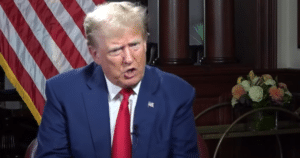Justice Department sees leadership changes amid push for broad reforms
Attorney General Pam Bondi unexpectedly dismissed Pamela Hicks, the chief legal counsel of the Bureau of Alcohol, Tobacco, and Firearms (ATF), on Thursday as part of an ongoing restructuring effort at the Department of Justice (DOJ).
This firing decision is part of the Trump administration's strategy to remove officials affiliated with past administrations to reshape the department's leadership, as Fox News reports.
Hicks confirmed her firing through a LinkedIn post in which she expressed gratitude for her time at the Department and reflected on her career. Despite this significant change, Hicks maintained professionalism, stating the "highest honor" was serving as ATF's chief counsel. Her tenure began in 2021 after serving previously under former President Donald Trump's administration as deputy chief counsel.
Administration's Overhaul Push Continues
The reasons behind Hicks' departure appear aligned with the administration's aim to overhaul leadership in the wake of longstanding complaints within the DOJ. Bondi, confirmed as attorney general earlier this month, has been vocal about the department's need to abandon practices initiated during the Biden administration. At the Conservative Political Action Conference (CPAC), she criticized previous actions, affirming the DOJ had lost its mission to address violent crime adequately.
The DOJ has witnessed multiple resignations and terminations in recent weeks, highlighting the intensity of the ongoing transition. Notably, several federal prosecutors resigned earlier this month following controversy over dismissed corruption charges against New York City Mayor Eric Adams. This turmoil within the department underscores the extent of changes taking place at the federal level.
Day One Initiatives Emerge
With this momentum for change, Bondi introduced 14 executive orders on her first day in office. The focus remained on eliminating perceived politicization within the DOJ, a move she stated was essential to restore the department's core objectives. Her reforms aim to correct what she describes as a "weaponization" phase under prior leadership.
The restructuring comes in response to directives from President Trump, who had instructed the DOJ to dismiss all Biden-era U.S. attorneys. Emphasizing the need for initiating a fair justice system, Trump's push illustrates an administration-wide approach to enact rapid changes.
Tension Surround Sudden Staffing Changes
Hicks' removal from the ATF headquarters marked the culmination of significant shifts impacting longtime employees across the DOJ. Such actions may reflect broader political dynamics at play as the Trump administration seeks to manifest its vision within federal institutions. The ATF, in its response, reinforced its position as an unbiased agency, stating that it respects employee rights while refraining from commenting on specific personnel cases.
Bondi's comments on the department's former condition allude to a need for decisive action. She emphasized the scale of problems she has inherited, asserting that a day-by-day approach is necessary with a team committed to transformative reforms.
Reactions, Responses from Key Officials
These personnel changes have sparked discussions about the DOJ's future trajectory under Bondi, revealing divided opinions. While some view these reforms as essential to restoring the department's integrity, others express concern over the loss of experienced legal professionals. Hicks, with a 23-year history at the DOJ, represented continuity and expertise within the organization.
Her dismissal introduces questions regarding the balance between eliminating former practices and retaining institutional knowledge. As the department continues its restructuring effort, the outcomes of these decisions remain to be fully realized.
Insights into Reform Plans
Despite these significant shifts, the DOJ's broader strategy under Bondi includes both personnel and policy changes aimed at refocusing priorities towards crime reduction. By addressing the underlying causes of perceived inefficiencies, the administration intends to usher in a new era of legal administration.
The intense pace and scale of changes underscore the urgency perceived by leadership in correcting past practices. Hicks' removal may symbolically echo the administration's intention to redefine the narrative surrounding the DOJ's current capabilities and future potential.
As these reforms unfold, close attention to the DOJ's adaptations will be necessary to gauge their efficacy and alignment with stated goals.



